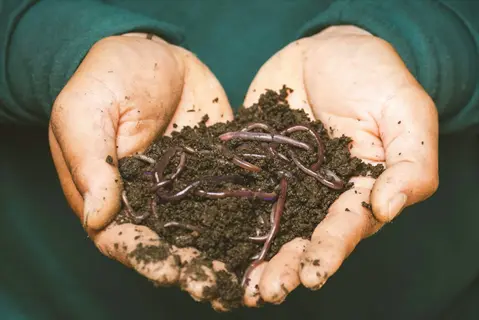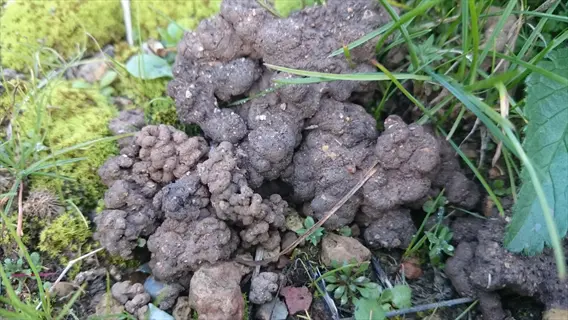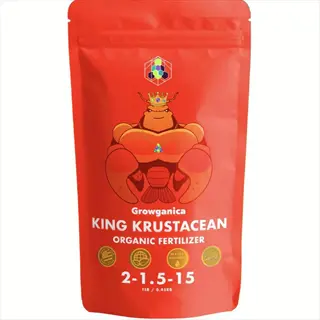Compost Tea Brewing: The Ultimate Guide

Written by
Kiana Okafor
Reviewed by
Prof. Samuel Fitzgerald, Ph.D.Compost tea brewing requires non-chlorinated water and mature, earthy-smelling compost.
Aerated brewing yields 100x more microbes but needs pump equipment investment.
Apply tea within 4 hours: soil drench for roots, foliar for leaves.
Non-aerated brewing suits beginners; aerated excels for large-scale disease control.
Discard tea with sulfur odors immediately to prevent pathogen risks.
Supplement heavy-feeding plants with fertilizers; tea enhances but doesn't replace nutrients.
Article Navigation
Happy little ecosystems can be created in gardens of any size through the process of brewing compost tea. This liquid fertilizer activates soil nutrients that are otherwise locked in your soil. The organic method perspective involves plant growth without the use of synthetic chemicals. I have witnessed urban balconies and farm fields come alive through the use of compost tea brewing. When you start brewing, it's surprising how quickly your space transforms!
So, what miracle is this? Compost tea is a microbial-rich liquid made from quality compost. Billions of beneficial bacteria and fungi are present. These microorganisms enhance soil structure and help combat plant diseases. After I started using compost tea, my tomatoes resisted blight for the first time!
You'll learn how simple ingredients produce amazing results. We'll be learning about aerated and non-aerated brewing methods. You will see what brewing method is suitable for your garden size and what your goals are. I will outline the specific steps that I use in my backyard. Prepare to unleash the power of nature in a bucket.
Essential Brewing Ingredients
Your compost tea will be most successful if made from finished compost. It should be dark and crumbly like chocolate cake. It shouldn't smell sour or rotten, but rather earthy. Unfinished compost could introduce pathogens that kill plants. I lost seedlings from contaminated tea years ago. I learned the hard way.
Water quality is more important than many gardeners realize. Chlorine in tap water instantly kills beneficial microbes. Use rainwater or dechlorinate tap water. Let it sit naturally uncovered for 24 hours or add vitamin C powder as a dechlorinator; it works quickly. My well water has yielded far superior results than city water ever has.
Fermented foods upgrade good tea to great tea. Unsulfured molasses is a food source for the bacteria, and fish hydrolysate gives them nitrogen. The two ingredients increase microbe populations incredibly. I apply about one tablespoon per gallon for each ingredient. Avoid using synthetic products, as they disrupt the microbial balance.
Worm castings increase the mineral content and biodiversity in your brew. They possess beneficial enzymes that enhance the absorption of nutrients from the soil. Just add a handful of worm castings per gallon of brew. I notice that my plants have developed deeper green leaves within days of using worm castings.

Finished Compost
- Texture: Dark, crumbly consistency indicates proper decomposition without recognizable food scraps.
- Smell: Earthy aroma confirms beneficial microbes are active with no ammonia odors.
- Sustainability: Supports water conservation by improving soil moisture retention up to 60%.
- Safety: Eliminates pathogens through thermophilic decomposition reaching 130-160°F (54-71°C).

Worm Castings
- Appearance: Dark granular material resembling coffee grounds with uniform texture.
- Nutrients: Contains 5x more nitrogen than standard compost and improves soil sustainability.
- Microbes: Hosts 10x more beneficial bacteria than typical garden soil.
- Usage: Mix directly into tea or apply as top dressing for plant nutrition.

Kelp Meal
- Source: Sustainably harvested seaweed rich in 60+ trace minerals for plant health.
- Function: Stimulates root growth and enhances disease resistance in plants.
- Sustainability: Renewable ocean resource supporting eco-friendly gardening practices.
- Application: Can be brewed in tea or mixed directly into planting beds.

Fish Hydrolysate
- Production: Cold-processed from fish remains to preserve natural enzymes and nutrients.
- Benefits: Provides readily available nitrogen and phosphorus while promoting water conservation.
- Odor: Distinct marine smell indicates freshness; avoid rancid products.
- Usage: Add directly to compost tea to boost microbial activity and plant growth.

Wood Ash
- Composition: Alkaline material rich in potassium and trace minerals from burned hardwood.
- Function: Naturally raises soil pH while supporting water conservation in sandy soils.
- Caution: Limit use to avoid excessive alkalinity that harms acid-loving plants.
- Application: Sprinkle into compost tea for potassium boost or mix directly into soil.
Step-By-Step Brewing Guide
There are two different methods of brewing compost tea, each with its own turnaround time. The non-aerated method takes 3-7 days and uses natural oxygen diffusion. The aerated method is quicker, after 24-48 hours, and uses air pumps. Select the process based on your time and resources.
Temperature regulation makes or breaks your brew. Maintain a temperature range of 55-80°F (13-27°C) for optimal microbial growth and propagation. Outside of that, useful organisms slow down or die. I use a floating thermometer to monitor the temperature of my summer and winter brews constantly.
Chlorinated water is unacceptable in brewing success. Chloride kills the organisms you are trying to grow. Rainwater or dechlorinated tap water is the only acceptable option. I suggest preparing the water a day in advance and letting it sit uncovered to allow the chemicals to evaporate.
Be on the lookout for foam forming in aerated brews, as it indicates fairly good oxygenation. A thick creamy foam indicates the presence of bacteria. If no foam develops, it means either equipment failure or an issue with the process. I typically check my air stone every hour during the first brewing phase.
Preparation
- Gather materials: 5-gallon bucket (18.9 L), finished compost, non-chlorinated water, and stirring tool
- Measure compost at 1-2 cups per gallon (240-480 mL per 3.8 L) for optimal microbial concentration
- Position bucket in shaded area maintaining 55-80°F (13-27°C) temperature range
Mixing
- Combine compost and water in bucket using vigorous stirring motion
- Ensure thorough saturation until mixture resembles dark chocolate liquid
- Cover loosely with breathable cloth to permit oxygen exchange
Daily Maintenance
- Stir mixture twice daily for 30 seconds to incorporate oxygen
- Monitor for earthy aroma indicating healthy microbial development
- Discontinue if foul odors resembling rotten eggs emerge
Straining
- After 3-7 days, pour liquid through mesh strainer into clean container
- Retain solids for garden mulch or compost pile reactivation
- Use tea immediately to maximize living microorganism benefits
Pro Tips
- Extend brewing to 7 days in cooler temperatures below 60°F (16°C)
- Add aquarium bubbler for 10 minutes before straining to boost oxygen
- Test pH with strips; ideal range is 6.5-7.5 for plant absorption
Equipment Setup
- Assemble air pump, tubing, and air stone in 5-gallon bucket (18.9 L)
- Place compost in mesh bag resembling oversized tea infuser
- Position system out of direct sunlight to maintain below 80°F (27°C)
Activation
- Submerge compost bag in dechlorinated water starting aeration
- Add microbial foods: 1/4 cup molasses (60 mL) + 2 tbsp fish hydrolysate (30 mL)
- Gently massage bag every 6 hours to release microorganisms
Monitoring
- Check for creamy foam formation indicating bacterial proliferation
- Verify consistent bubble production from air stone
- Measure dissolved oxygen above 6 mg/L using test strips if available
Completion
- After 24-48 hours, remove compost bag squeezing residual liquid
- Strain liquid through cheesecloth to capture particulate matter
- Apply within 4 hours for maximum biological activity
Pro Tips
- Use thermometer to maintain 68-75°F (20-24°C) optimal range
- Extract air stone monthly for vinegar cleaning to prevent clogging
- Observe color transformation from brown to caramel as progress indicator
How to Use Compost Tea
Dilution makes or breaks your plants. Blend up to a 1:1 ratio water for gentle seedlings. Stable plants withstand stronger ratios causing up to 1:10 dilution. I personally measure diligently with marked containers avoiding root disintegration especially after transplanting.
When using foliar sprays, it is best to apply them when the temperature is cooler. Early in the morning or during dusk can help prevent plants from getting solar leaf burn. Spray until the liquid begins to drip slightly from the leaves. They achieve a few black spots on the leaves by spraying before sunrise. On windy days, and once the plant dries, the spray can become somewhat ineffective.
Soil drenches places microorganisms directly in the root zones. Drench the area around the base of the plants, pouring slowly while avoiding the stems. This method encourages stronger root development and improves nutrient absorption. My vegetable yields increased 30% when I transitioned from foliar to soil applications with the heavy feeders.
Freshness is so important with live microbial brews. For optimal performance, use tea within 4 days, store tea in shaded, airtight containers at 40-50°F. I record brew dates on my tea batches and discard any batches that develop off-odors. Freezing tea can significantly reduce its benefits.
Preparation
- Dilute concentrated tea with non-chlorinated water: 1:1 ratio for seedlings, undiluted for established plants
- Use watering can or drip irrigation system for precise root zone targeting
- Calculate volume: 1 gallon (3.8 L) per 10 square feet (0.93 m²) of garden bed
Application Technique
- Pour slowly around plant base, avoiding stem contact to prevent rot
- For trees/shrubs: Apply within drip line where feeder roots concentrate
- Water lightly afterward to help nutrients penetrate deeper soil layers
Optimal Timing
- Apply during active growth phases: early spring through late summer
- Choose overcast days to reduce evaporation and increase absorption
- Avoid application during heavy rain to prevent nutrient runoff
Frequency Guidelines
- Seedlings: Every 2 weeks during establishment phase
- Vegetables: Weekly during fruit production stage
- Perennials: Monthly during growing season, stop 6 weeks before frost
Safety Precautions
- Wear gloves when handling concentrated tea to avoid skin irritation
- Rinse edible produce thoroughly if applied within 1 week of harvest
- Avoid application near water sources to prevent contamination
Preparation
- Dilute tea 1:1 with water for delicate plants, 1:10 for hardy species
- Use clean spray bottle or backpack sprayer with fine mist nozzle
- Strain through cheesecloth to prevent nozzle clogging from particles
Spray Technique
- Coat both leaf surfaces until liquid drips slightly (avoid runoff)
- Target underside where stomata concentrate for maximum absorption
- Maintain 12-18 inches (30-45 cm) distance for even coverage
Optimal Conditions
- Apply when temperatures are 55-75°F (13-24°C) to prevent leaf damage
- Choose mornings with dew for extended leaf surface moisture
- Avoid spraying when wind exceeds 10 mph (16 km/h) to ensure coverage
Frequency Guidelines
- Preventative use: Every 2-3 weeks during growing season
- Disease response: Apply every 3 days for 2 weeks during outbreaks
- Flowering plants: Stop spraying when blooms open to protect pollinators
Safety Precautions
- Wear protective eyewear and mask during spraying
- Don't spray edible crops within 3 days of harvest
- Discontinue use if plants show signs of stress or discoloration
Aerated vs Non-Aerated Comparison
The primary distinction centers on the method of oxygenation. Aerated brewing utilizes air pumps for forced aeration to create a constant stream of bubbles in the vessel. Non-aerated relies on natural diffusion of oxygen through manual stirring. I have experimented with both forms of aeration simultaneously for three seasons, and the forced oxygen method consistently produced more active microorganisms.
Microbial counts show substantial variation between methods. Aerated brews contain 10-100x more beneficial bacteria and fungi. This density results in more effective disease suppression for susceptible plants. When I started switching to aerated tea, my squash plants completely fought off powdery mildew. Non-aerated teas are also good for general soil enrichment.
Consider your budget and how frequently you plan to brew. Non-aerated brewing costs nothing beyond a bucket and a stirring stick. Aerated systems will cost you $30-50 for a decent pump and air stones. If you're new to brewing, start with the non-aerated system. You can always upgrade later if you need faster results when growing a big garden.
The time investment is quite variable, but that's part of the appeal! Non-aerated takes 3-7 days and requires stirring twice daily. Aerated finishes in 24-48 hours and does not require much supervision. You'll have to make a choice that fits your schedule. Personally, I use the aerated method when I am preparing plants and busy getting them in the ground. Non-aerated fits nicely during the slower gardening times!
Advantages
- Zero equipment cost - uses basic household items
- Traditional method with centuries of practical use
- Energy efficient - no electricity required
- Beginner-friendly - simple process with minimal steps
- Low maintenance - no mechanical parts to maintain
Limitations
- Higher pathogen risk without proper monitoring
- Labor intensive - requires twice-daily stirring
- Slower results - takes 3-7 days for finished tea
- Lower microbial concentration than aerated versions
- Temperature sensitivity - requires 55-80°F (13-27°C) range
Advantages
- Higher microbial density - 10-100x more beneficial bacteria
- Faster brewing - ready in 24-48 hours
- Lower disease risk - oxygen suppresses pathogens
- Consistent results - less dependent on manual intervention
- Better oxygenation - promotes aerobic microbe growth
Limitations
- Equipment cost - requires air pump investment
- Electricity dependency - needs continuous power source
- Technical issues - pumps can clog or malfunction
- Learning curve - proper setup requires initial guidance
- Noise pollution - pump operation may cause disturbance
Troubleshooting and Safety
Foul smells indicate serious brewing conditions. A sulfur smell indicates that anaerobic bacteria dominate and prompt attention is required. Add ascorbic acid and hurry to add oxygen. If it smells like rotten eggs, dump the batch. I learned this when a ruined brew killed my bean plants.
Many things mold indicates a sugar imbalance in your mix. If you see surface fuzz, drop molasses levels by 50%. Use a large spoon to remove the contamination immediately and stir more frequently. My brews don't mold because I've decreased the sugar input during humid summers.
Elimination of chlorine is essential for the survival of microorganisms. For instant dechlorination, use ascorbic acid (vitamin C). Alternatively, let the tap water sit uncovered for 24 hours. I keep pre-treated water ready in a covered bucket for last-minute brewing.
Please take safety precautions when using deeply concentrated brews. Use gloves when working with the brews to avoid skin irritation by microbes. When handling edible crops, rinse them well if they are sprayed within 3 days of harvesting. I also use eye protection when pouring them and stirring.
Foul Odors
- Sulfur smell: Sign of anaerobic bacteria. Add 1 tbsp ascorbic acid per 5 gallons and increase aeration
- Ammonia odor: Indicates unfinished compost. Strain immediately and source mature compost
- Rotten egg scent: Stop brew, discard batch, sterilize equipment with vinegar solution
Mold Formation
- Surface mold: Scoop out contamination, reduce molasses by 50%, increase stirring frequency
- Floating chunks: Strain through cheesecloth, ensure compost is fully decomposed before use
- Fuzzy growth: Lower ambient temperature below 80°F (27°C) and decrease brewing time
Ineffective Brew
- No earthy smell: Extend brew time 24 hours, add 1/4 cup worm castings to reactivate microbes
- Water separation: Stir vigorously every 4 hours, ensure compost is fully submerged
- Cloudy liquid: Test pH (ideal 6.5-7.5); adjust with wood ash (raise) or vinegar (lower)
Equipment Problems
- Clogged aerator: Soak in vinegar solution for 2 hours, rinse with dechlorinated water
- Leaking bucket: Seal with food-grade silicone, avoid plastic containers older than 5 years
- Pump failure: Check power source, replace tubing if hardened or cracked
Plant Reactions
- Leaf burn: Dilute tea 1:10 immediately, apply only at dawn/dusk below 75°F (24°C)
- No improvement: Test soil nutrients, increase application frequency to weekly
- Pest attraction: Stop applications for 2 weeks, add neem oil to next brew
Handling Precautions
- Glove requirement: Wear nitrile gloves when handling concentrated tea or raw compost
- Eye protection: Use goggles during stirring to prevent splashes in eyes
- Masks: Wear N95 masks if sensitive to dust or microbial aerosols
Pathogen Prevention
- Compost sourcing: Use only thermophilic compost heated to 130°F (54°C) for 15 days
- Manure avoidance: Never use fresh animal waste; require 6-month aged compost
- Testing: Send samples to labs if using on commercial crops; target <1 Salmonella CFU/4g
Storage Guidelines
- Temperature control: Store at 40-50°F (4-10°C) in airtight containers
- Shelf life: Discard after 4 days; freezing destroys beneficial microbes
- Labeling: Mark containers with brew date and ingredients list
Application Safety
- Edible crops: Wash produce thoroughly after foliar sprays; wait 3 days before harvest
- Water sources: Apply at least 100 feet (30 m) from wells or streams
- Children/pets: Restrict access to brewing areas for 24 hours after application
Equipment Hygiene
- Cleaning: Sanitize all tools with 10% vinegar solution after each use
- Disposal: Compost failed brews in isolated pile; never pour down drains
- Maintenance: Replace plastic components annually to prevent microplastic contamination
5 Common Myths
Compost tea may be preferred over chemical fertilizers in every gardening situation because it contains all the nutrients that plants need.
A compost tea may supply beneficial microbes and some nutrients, but it will not replace a balanced fertilizer when growing heavy-feeding plants. Tomatoes, corn, and other high-producing crops will need higher levels of nitrogen, phosphorus, and potassium, which will not be provided from compost tea alone. Use compost tea as a supplement for enhancing soil biology and nutrient uptake, but test the soil to see if more (fertilizer) is needed for proper plant growth and production.
Aerated compost tea is always superior to non-aerated versions because it produces higher microbial counts every single time.
While aerated tea generally has higher microbial populations, non-aerated tea offers distinct advantages for certain applications. Beginners and small-scale gardeners benefit from non-aerated methods requiring no equipment investment, and some studies show non-aerated tea fosters different microbial communities that may better suppress certain soil pathogens. The 'superior' method depends on your goals: choose aerated for disease suppression in large areas, but non-aerated for simplicity in container gardens or as a starter technique.
Brewing compost tea for longer than 48 hours increases power and efficacy for stimulating plant growth.
But brewing provides diminishing returns after 48 hours as oxygen begins to deplete without replenishment, and harmful anaerobic bacteria begin to thrive. Beneficial aerobic microbes can peak in aerated tea after 24-36 hours but begin to decline rapidly at that time. According to my experience, a non-aerated brew will begin to break down after 7 days. Over-brewed tea can render a foul, putrid odor, demonstrate a loss of value, and introduce pathogens like E. coli into the mix to potentially threaten health. If you are brewing aerated teas, use within 4 hr, and if brewing non-aerated tea, use within 12 hr for best results. As a general rule, do not extend beyond these time frames or you will begin to lose effectiveness.
Microorganisms found in compost tea are all helpful to plants, so there is no reason for concern regarding pathogens.
Compost tea can carry dangerous pathogens, such as Salmonella and E. coli., however, if produced using immature compost or contaminated materials, compost tea can harbor dangerous pathogens such as Salmonella and E. coli. Beneficial microbes will only dominate a compost tea when: a) it is made from fully composted materials that been heated adequately (130F (54C) for 15 days), b) is brewed within proper temperatures (55-80F (13-27C)), c) is brewed without raw manure. Always be careful about the compost that you buy, continue to monitor the brewing conditions, and/or stop brewing if the compost tea brewed develops a foul odor, surface films, or slimy texture which may indicate that pathogens are growing in the tea.
Compost tea creates serious health risks for edible plants and should never be used on vegetables.
Brewed correctly, compost tea is safe on edibles, provided using compost verified to be pathogen-free and that you follow protocols. Studies show that aerated tea using thermophilic compost can successfully suppress human pathogens through competitive exclusion from beneficial bacteria. Be sure to apply at least 3 days before harvest, wash the produce thoroughly, and do not use tea made from compost with animal manures. When brewed properly, compost tea improves the nutrition of food crops, without introducing a food safety concern.
Conclusion
Compost tea provides a powerful two-fold benefit to your garden. It nourishes plants and builds resilient soil ecosystems. The organisms give nutrients to plants and naturally combat disease organisms. My garden went from struggling to thriving in one season. This holistic model outperforms synthetic fertilizers in the long term.
Select brewing methods based on your needs. Aerated brewing is the fastest and most efficient way to get your microbial populations in solution quickly would be through aerated brewing. Non-aerated methods will give you the simplest process without expensive equipment. I use a combination of both methods during the growing season, depending on the crop's needs or the season/timing. Select the method based on the size of your garden, your goals, and related needs.
Quality ingredients and safety are the cornerstones of success. Always use aged compost and always dechlorinated water. Be aware of safety precautions when handling, especially with food crop-type plants. I've ensured protocols to avoid contamination and healthy plants. Don't take shortcuts on the basic foundations!
Test out the biological limits in search of your ideal brew. Adjust the ratios of ingredients and brew times gradually to achieve the desired results. Stay within the temperature limits and limit the microbes. During my trials, I discovered incredible results working with nature instead of against it. Start small and see how your plants react.
External Sources
Frequently Asked Questions
How do you brew compost tea?
Brewing involves combining quality compost with non-chlorinated water and microbial foods like molasses. Aerated versions require air pumps for 24-48 hours, while non-aerated methods rely on manual stirring for 3-7 days. Proper temperature control between 55-80°F is essential throughout the process.
Can I use tap water for compost tea?
Tap water must be dechlorinated first, as chlorine kills beneficial microbes. Effective methods include:
- Letting water sit uncovered for 24 hours
- Adding ascorbic acid (vitamin C)
- Using rainwater collection systems
- Filtering with activated carbon
How to tell if compost tea is ready?
Ready tea has a rich earthy smell, creamy foam (in aerated versions), and no foul odors. Visual indicators include a dark brown color resembling weak coffee and visible bubbling activity. Avoid any batches with sulfur scents or surface mold formations.
Why does my compost tea smell bad?
Foul odors indicate anaerobic conditions or contamination:
- Sulfur/rotten egg smell: Harmful bacteria dominance - discard immediately
- Ammonia odor: Immature compost - strain and source better materials
- Putrid scent: Pathogen growth - sterilize equipment and restart
Can compost tea replace fertilizer?
While tea enhances soil biology and nutrient absorption, it can't fully replace fertilizers for heavy-feeding plants. Crops like tomatoes require additional nitrogen and phosphorus. Use tea as a supplement alongside balanced fertilization based on soil test results.
What are the disadvantages of compost tea?
Key limitations include:
- Pathogen risks if brewed incorrectly
- Short 4-day shelf life after brewing
- Equipment costs for aerated systems
- Labor-intensive stirring for non-aerated versions
- Temperature sensitivity during brewing
How long can compost tea be stored?
Freshly brewed tea lasts only 4 days when refrigerated at 40-50°F. Freezing destroys beneficial microbes. Always use within 4 hours for foliar sprays and 12 hours for soil drenches to maximize microbial effectiveness.
What's the best application method for compost tea?
Application depends on plant types:
- Soil drench: Direct root zone application for vegetables
- Foliar spray: Leaf coating for disease prevention
- Avoid foliar on seedlings and root crops
- Apply at dawn/dusk below 75°F to prevent leaf burn
Can I add supplements like Epsom salt to compost tea?
Additives disrupt microbial balance and aren't recommended. Epsom salt provides magnesium but harms microbes at high concentrations. Instead, incorporate mineral supplements directly into soil or use them in separate fertilizer applications.
How does temperature affect compost tea brewing?
Temperature critically impacts microbial activity:
- Ideal range: 55-80°F (13-27°C)
- Below 55°F: Slows microbial growth - extend brew time
- Above 80°F: Risks pathogen dominance - use cooling methods
- Monitor constantly with floating thermometers

